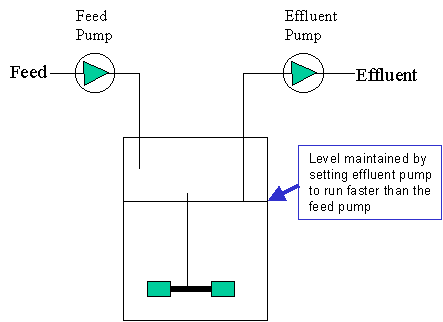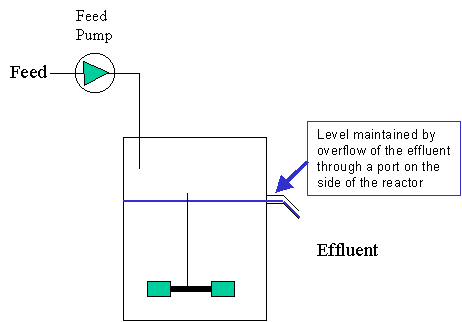
Chemostat
The chemostat is the most popular method in continuous culture. It is based on nutrient limitation. In chemostat fermentation, the nutrient is fed at constant rate. Chemostat (Ref. 1 and 2) is a useful tool for studying the physiology or evolution of a microorganism growing below its maximum specific growth rate (umax). In a chemostat, growth rate is determined by the supply of a single limiting nutrient, the choice of which affects the metabolism and evolution of the microorganism.
Chemostat has been used widely to study bacterial metabolism, population genetics, and plasmid stability, mostly because these are the simplest and most easily constructed types of continuous cultures (Ref. 3).
The volume of the chemostat can be controlled either by using a pump:

or an overflow system:

References:
1. Novick A. and Szilard, L. Description of the chemostat. Science, 112, 715-716, 1950
2. Monod, J. (1950) La technique de culture continue theorie et applications. Ann. Inst. Pasteur, 79, 390-410, 1950
3. G. L. Kleman, J.
J. Chalmers, G. W. Luli and W. R. Strohl, Glucosestat, a Glucose-Controlled
Continuous Culture, , Applied and environmental Microbiology, April
1991, 918-923.
![]()
Last modify: 05/01/2000, by Xuezhen Kang